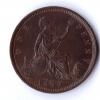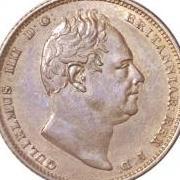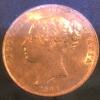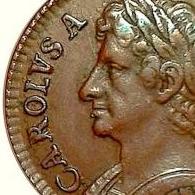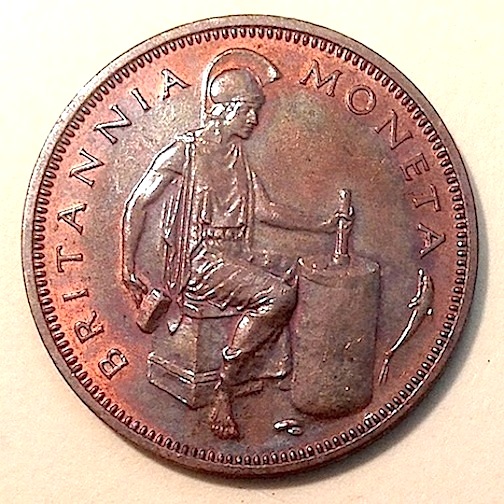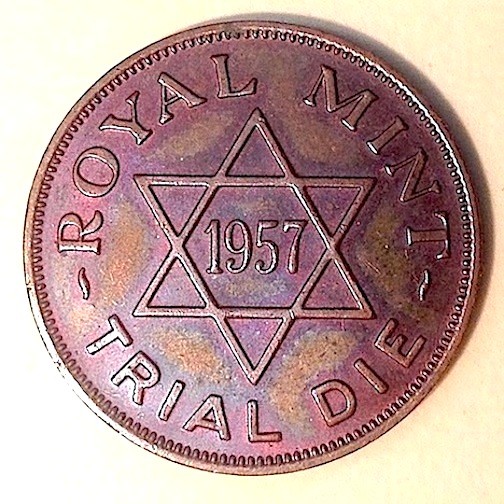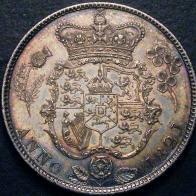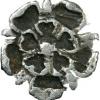Leaderboard
Popular Content
Showing content with the highest reputation on 04/13/2018 in Posts
-
My take on this is that removal of material, eg mud, grease, wax or varnish which is not integral with the structure of the coin should be considered as different from anything that affects the coin itself, ie patina, surface metal, integrated corrosion products. The former can usually be removed by judicious use of water, solvents, soft brush or cocktail stick and the actual coin will be unchanged, and more stable in the future. This could be seen as conservation, others might say surface cleaning. I consider this acceptable, sometime essential to the prevention of future corrosion. The latter will materially alter the appearance of the coin itself by chemical action or physical abrasion, and involves removal of some integral part of the coin. This could be seen as cleaning, and is generally undesirable. That is not to say that judicious removal of active corrosion eg bronze disease is not essential, otherwise the coin will simply not be around for future generations to enjoy. The removal of local corrosion in a controlled fashion while not treating the coin as a whole could be considered conservation. I find it unhelpful to take a dogmatic negative view with regard to conservation (as opposed to cleaning), as by definition conservation should enhance the longevity and survivability and ideally preserve as much as possible the original state of the coin. ‘Cleaning’ in most collectors minds is conditioned by images of wire wool and brasso, silver dip or a buff with a soft cloth, and understandably carries negative vibes. Conservation is not the same. Neither will be required for most collector coins, though most will already have had the soap and water treatment in the past and we are none the wiser. Jerry3 points
-
OK - updated table including the £20, £50 and £100 silver coins. I've introduced the concept of MINP for these coins - being the 'Max If Not Paddy' number of these coins that one of us owns up to holding! This gets round any 'divide by zero' issues and also offers a POP-style number for these denominations with a maximum of 100... Denomination Paddy Stunt UWN MINP* POP Numbers Paddy Stunt UWN Half P 14 0 14 0 Half P 100 0 100 Penny 48 2 24 0 Penny 100 4 50 Two Pence 45 2 11 0 Two Pence 100 4 24 Five Pence 50 8 17 0 Five Pence 100 16 34 Ten Pence 61 3 49 0 Ten Pence 100 5 80 Twenty Pence 43 2 14 0 Twenty Pence 100 5 33 Fifty Pence 101 52 73 0 Fifty Pence 100 51 72 One Pound 46 8 25 0 One Pound 100 17 54 Two Pounds 61 38 48 0 Two Pounds 100 62 79 Crown (25p) 4 3 0 0 Crown (25p) 100 75 0 Crown (£5) 26 2 5 0 Crown (£5) 100 8 19 BU Sets 32 2 7 0 BU Sets 100 6 22 Proof sets 41 3 5 0 Proof sets 100 7 12 £20 silver coins 0 4 2 4 £20 silver coins 0 100 50 £50 silver coins 0 1 1 1 £50 silver coins 0 100 100 £100 silver coins 0 0 0 0 £100 silver coins 0 0 0 Sub Total Decimal 572 130 295 0 Decimal POP 100 23 52 * Max If Not Paddy2 points
-
I have so many of the darn things I put them out at 50p each - at least it can attract new collectors that way, and if it p***s off some of the greedy stall holders a bit, so be it!2 points
-
If someone wants to mess about with a coin thats up to them. The problem is more often than not they either deny doing it or dont mention it when selling one. The companies you mention offer the service but dont put it on the holder which is exactly the same. If its right to do it what is everyone hiding ?.2 points
-
It being one of the hardest to find of the series I thought fellow fans of early milled copper may be interested in seeing this. I rarely buy coins these days, and almost never from Ebay, but I'd noticed it listed at the weekend and, knowing how seldomly these are offered for sale, decided to have a pop. The coin came with the original owners ticket. Does anyone here know anything about Lord Waltham or the 1941 sale mentioned? You'll see too The Farthing Specialist (John Minshull?) had graded it in the 1970s as 'very good fine'. This seems a little generous these days, however, as my winning bid was only £31.01 (far below my maximum), I'm very happy with it. Apologies for the crappy photos. I don't have the iPad at the moment so have had to use my phone.1 point
-
1 point
-
1 point
-
1 point
-
1 point
-
Congratulations. Good find! I take the occasional gamble myself on mixed lots but I've not had much luck. I usually come worse off. It's good to hear a success story. One in a million that. Treasure it. Stu.1 point
-
Ian , its a Halfpenny Obverse shown with a Reverse d From a 1908 penny. The obverse has a 157 Teeth1 point
-
Awesome, that should keep all the relevent 1873 info in one thread for future reference1 point
-
http://www.londoncoins.co.uk/?page=Pastresults&auc=146&searchlot=2526&searchtype=2 An example of both types in this lot1 point
-
1 point
-
We all know I am no expert at varieties, but for practice I tried using the book to judge. I think I go for the 7+G too - I think I can see the small door on the light house at the base, and I don't see the incuse hemline in the drapery. The book is very frustrating - the practice of writing "Similar to Reverse X but..." leaves one bouncing back and forth trying to work out which features have carried forward. Long overdue for someone to do a website like the excellent Penny and Farthing ones already out there.1 point
-
Essentially conservation is remedial work to stabilise, and prevent future deterioration. Cleaning is to make it look prettier, at least in the eyes of the ‘cleaner’. Jerry1 point
-
If a coin has been 'improved' by a careful act of cleaning, then I see nothing wrong with that, in fact I would applaud it. There are a mix of positive actions, such as gentle washing, extremely brief dipping to remove ugly tarnish, the application of surgical spirit to remove surface grime, acetone, or the long term soaking in olive oil to remove corrosion, etc. They are all cleaning, but can be done with care and attention. However, if a coin LOOKS cleaned - polished, unnaturally toned by dipping, or covered with hairlines - then that's a Bad Thing and will negatively affect the coin's value.1 point
-
1 point
-
1 point
